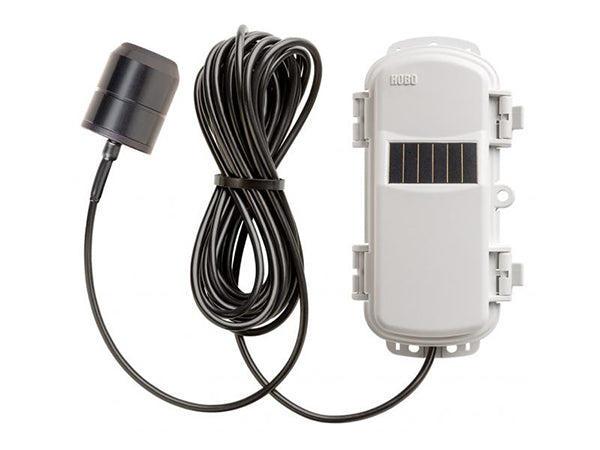Canada’s Instrumentation Leader Since 1946.


Measures light intensity for frequencies relevant to photosynthesis. HOBOnet wireless sensors communicate data directly to the HOBO RX3000 or the HOBO MicroRX station or pass data through other wireless sensors back to the central station. These sensors are preconfigured and ready to deploy, and data is accessed through HOBOlink, Onset’s innovative cloud software platform.
Wireless Features
In what environment does this sensor operate?
This sensor operates in an outdoor environment.
What measurements does this sensor support?
The RXW-LIA-xxx sensor supports the following measurements: Light Intensity and PAR
HOBOnet Field Monitoring System
The NEW HOBOnet Field Monitoring System from Onset provides a cost-effective and scalable solution for web-enabled monitoring of field conditions for applications such as crop management, research, and greenhouse operations.
| Measurement Range | 0 to 2500 μmol/m2/sec, wavelengths 400 to 700 nm |
| Accuracy | ±5 μmol/m2/sec or ± 5%, whichever is greater in sunlight; Additional temperature induced error ±0.75 μmol/m2/sec/°C from 25°C (0.42 μmol/m2/sec/°F from 77°F) |
| Angular Accuracy | Cosine corrected 0 to 80 degrees from vertical; Azimuth Error <2% error at 45 degrees from vertical, 360 degree rotation |
| Resolution | 2.5 μmol/m2/sec |
| Drift | <±2% per year |
| Operating Temperature Range | -25° to 60°C (-13° to 140°F) with rechargeable batteries -40 to 70°C (-40 to 158°F) with lithium batteries |
| Radio Power | 12.6 mW (+11 dBm) non-adjustable |
| Transmission Range | Reliable connection to 457.2 m (1,500 ft) line of sight at 1.8 m (6 ft) high Reliable connection to 609.6 m (2,000 ft) line of sight at 3 m (10 ft) high |
| Wireless Data Standard | IEEE 802.15.4 |
| Radio Operating Frequencies | RXW-LIA-900: 904–924 MHz RXW-LIA-868: 866.5 MHz RXW-LIA-922: 916–924 MHz |
| Modulation Employed | OQPSK (Offset Quadrature Phase Shift Keying) |
| Data Rate | Up to 250 kbps, non-adjustable |
| Duty Cycle | <1% |
| Maximum Number of Motes | 50 motes per one RX Wireless Sensor Network |
| Battery Type/ Power Source | Two AA 1.2V rechargeable NiMH batteries, powered by built-in solar panel or two AA 1.5 V lithium batteries for operating conditions of -40 to 70°C (-40 to 158°F) |
| Battery Life | With NiMH batteries: Typical 3–5 years when operated in the temperature range -20° to 40°C (-4°F to 104°F) and positioned toward the sun (see Deployment and Mounting), operation outside this range will reduce the battery service life With lithium batteries: 1 year, typical use |
| Memory | 16 MB |
| Dimensions | Sensor: 4.1 cm height x 3.2 cm diameter (1.61 x 1.26 inches) Cable length: 2 m (6.56 ft) Mote: 16.2 x 8.59 x 4.14 cm (6.38 x 3.38 x 1.63 inches) |
| Weight | Sensor and cable: 109 g (3.85 oz) Mote: 223 g (7.87 oz) |
| Materials | Sensor: Anodized aluminum housing with acrylic diffuser and O-ring seal Mote: PCPBT, silicone rubber seal |
| Environmental Rating | Sensor: Weatherproof Mote: IP67, NEMA 6 |
| Compliance Marks | RXW-LIA-900 RXW-LIA-868 RXW-LIA-922 |
Copyright - 2025 - Hoskin Scientific